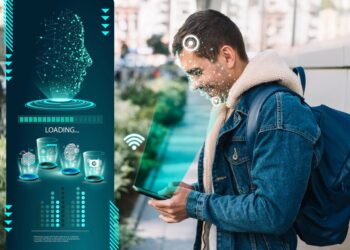Augmented Reality in Retail: Enhancing Customer Experience
Retailers are always looking for new ways to enhance the customer experience and create a memorable shopping experience. One technology that has the potential to transform the retail industry is augmented reality (AR). AR allows retailers to create immersive shopping experiences that engage customers and provide them with a more personalized and interactive experience. In this article, we explore the impact of AR on the retail industry, and how it can be used to enhance the customer experience.
What is Augmented Reality?
Augmented reality is a technology that overlays digital information onto the physical world. It is different from virtual reality (VR), which creates a completely digital environment. AR can be experienced through a smartphone, tablet, or a specialized AR headset. By using cameras and sensors, AR can detect the real world and add digital content to it in real-time.
How is AR Being Used in Retail?
AR is being used in a variety of ways in the this industry. Some of the most common applications of AR in retail include:
Virtual Try-On: AR can be used to create virtual try-on experiences for customers. This allows customers to see how products would look on them before making a purchase, and can be particularly useful for products such as clothing and cosmetics.
Product Visualization: AR can be used to create 3D models of products that can be viewed from different angles. This can be particularly useful for products such as furniture, where customers may want to see how the product would look in their home before making a purchase.
Interactive Displays: AR can be used to create interactive displays that engage customers and provide them with additional information about products. For example, an AR display could be used to show how a product works, or to provide customers with product recommendations based on their preferences.
Gamification: AR can be used to create gamified experiences that encourage customers to engage with products and brands. For example, a retailer could create an AR game that rewards customers for visiting different areas of a store, or for making purchases.

The Benefits of AR in Retail
AR has many benefits in the retail industry, including:
Enhanced Customer Experience: AR can create immersive and interactive shopping experiences that engage customers and provide them with a more personalized experience.
Increased Sales: AR can help to increase sales by allowing customers to try on products virtually and by providing them with additional information about products.
Reduced Returns: AR can help to reduce returns by allowing customers to see how products would look on them before making a purchase.
Improved Brand Image: AR can help to improve a brand’s image by showing that they are innovative and forward-thinking.
Competitive Advantage: AR can provide retailers with a competitive advantage by offering customers a unique and memorable shopping experience.
The Challenges of AR in Retail
While AR has many benefits in this industry, it also presents several challenges, including:
Cost: AR can be expensive to implement, particularly for smaller retailers.
Technical Complexity: AR requires specialized technical expertise, which can be difficult for some retailers to acquire.
Adoption: AR requires customers to have a compatible device, which may limit adoption.
Privacy: AR can raise privacy concerns, particularly if it involves collecting and using customer data.
Integration: AR requires integration with existing systems and processes, which can be challenging for some retailers.
Conclusion
AR has the potential to transform the retail industry by creating immersive and interactive shopping experiences that engage customers and provide them with a more personalized experience. While it presents both challenges and opportunities, it is clear that AR will play an increasingly important role in shaping the future of retail. Retailers must work together to overcome the challenges of AR and to ensure that it is used in a way that benefits customers and enhances the overall shopping experience.
One of the keys to successfully implementing AR in retail is to focus on the customer experience. AR should be used to enhance the shopping experience, rather than to replace it. For example, a virtual try-on experience should be easy to use and provide customers with accurate representations of how products would look on them. Similarly, interactive displays should provide customers with useful information and recommendations, rather than simply being a gimmick.
Moreover, retailers must ensure that they have the technical expertise and resources needed to implement AR effectively. This may involve partnering with technology companies or hiring specialized staff with expertise in AR.
Retailers must also consider the privacy implications of using AR. They should be transparent about how customer data is collected and used, and should ensure that customer data is protected and used in a responsible way.
Another important consideration when implementing AR in retail is the need for integration with existing systems and processes. AR should be integrated with existing inventory management and point-of-sale systems to ensure that customers can easily make purchases and receive their products.
AR has the potential to transform the retail industry by creating immersive and interactive shopping experiences that engage customers and provide them with a more personalized experience. While it presents both challenges and opportunities, it is clear that AR will play an increasingly important role in shaping the future of retail. By focusing on the customer experience, investing in technical expertise and resources, and ensuring that AR is used in a responsible and transparent way, retailers can successfully implement AR and provide their customers with a unique and memorable shopping experience.

AR can also be used to create a seamless shopping experience across different channels. For example, a customer could use AR to try on a product in-store, and then purchase the product online using their mobile device. This can help to create a more convenient and seamless shopping experience for customers, and can help retailers to increase sales and customer loyalty.
Moreover, AR can be used to create a more inclusive shopping experience. For example, virtual try-on experiences can help to address issues such as size and fit, which can be particularly challenging for some customers. Similarly, AR can be used to provide information in different languages or formats, making shopping more accessible for customers with disabilities.
Finally, AR can be used to provide retailers with valuable insights into customer behaviour and preferences. By tracking how customers interact with AR experiences, retailers can gain insights into what products and experiences are most popular, and can use this information to improve their offerings and better meet the needs of their customers.
AR has the potential to transform this industry by creating immersive, interactive, and personalized shopping experiences that engage customers and provide them with a unique and memorable experience. By focusing on the customer experience, investing in technical expertise and resources, and ensuring that AR is used in a responsible and transparent way, retailers can successfully implement AR and reap the benefits of this exciting technology.
















